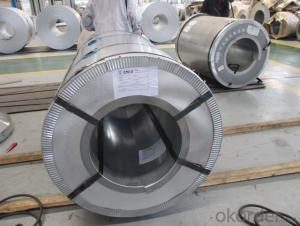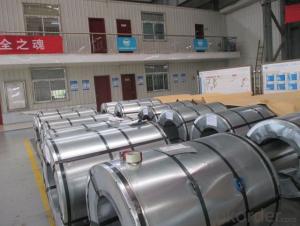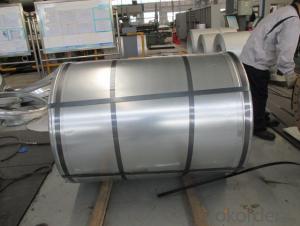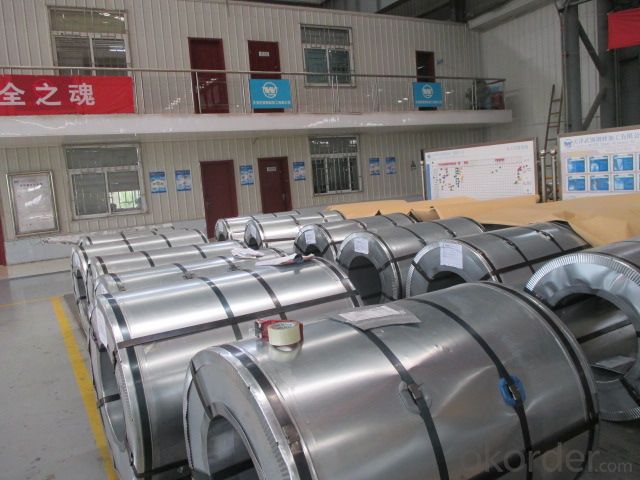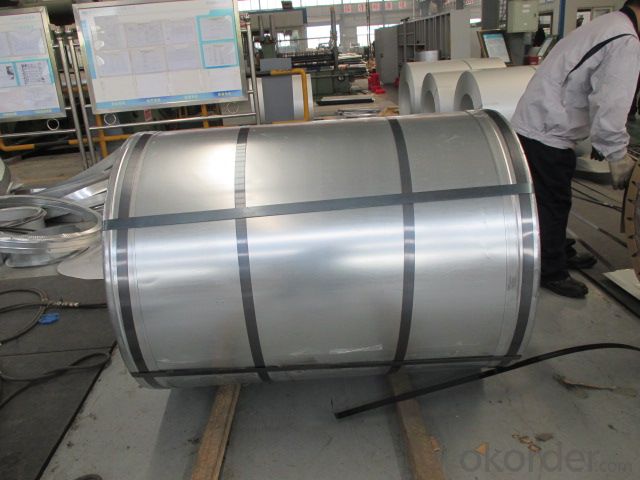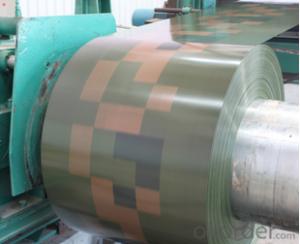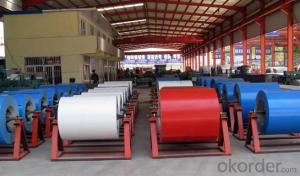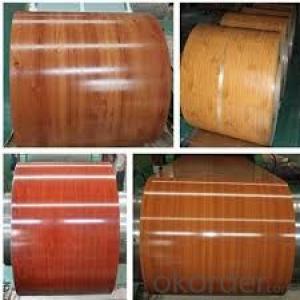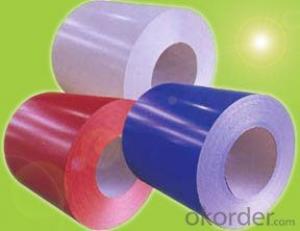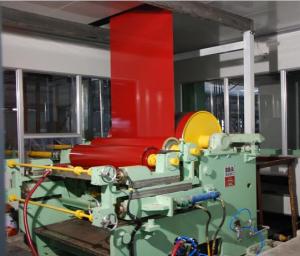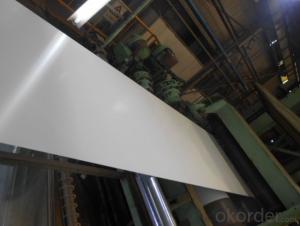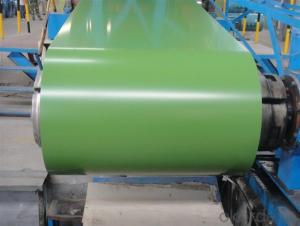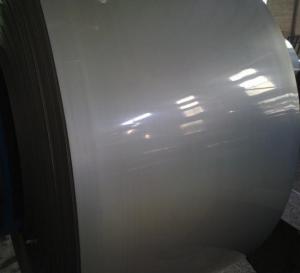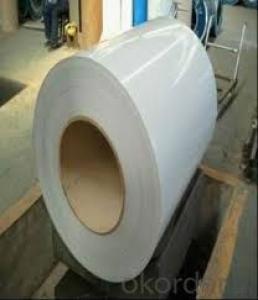STAINLESS STEEL COILS Mill Edge. No connection point in each coil.
- Loading Port:
- China main port
- Payment Terms:
- TT OR LC
- Min Order Qty:
- 50 m.t.
- Supply Capability:
- 20000 m.t./month
OKorder Service Pledge
OKorder Financial Service
You Might Also Like
STAINLESS STEEL COILS
Packaging & Delivery
Packaging Detail: seaworthy export package
Delivery Detail: on request
Specifications
1. more than 10 years’ experience on this field
2. advanced equipments
3. competitive price
4. soonest delivery
Product Description :
Commodity
STAINLESS STEEL COILS
Technical Standard: Steel Grade & Standard:J1
Surface Treatment:NO.1
Hot rolled Annealed and Pickled(HRAP)
Grade: J1 , Prime quality
Mill Edge. No connection point in each coil. Component: Ni:1% , Cu: 0.65-0.9%, Cr: 13%, Mn: 10–12%, C: 0.09-0.12%
Package: Properly packed for ocean freight exportation in 20''container
Application:: home appliances, constructions, building, machineries
Our Advantages :
1. Expertise:
More than 10 years of manufacture: we know how to properly handle every step of production.
2. Competitive price:
We can offer competitive prices to our customers.
3. Accuracy:
We have excellent technicians and leaders, which can ensure our products are exactly what you want.
4. Materials:
All steel coils are made of high-quality raw materials.
5. Certificate:
Our products are certified by ISO9001.
6. Productivity:
We have large-scales of production lines,, which can guarantee all your orders will be finished in earliest time.
The furnace heating style: improved Sendzimir heating technology
Hourly output: max.76.3t/h
Process after coating: tension leveling, Passivation or oiling
Our Service
Our quality
Test Equipments of Prepainted Galvanized Steel Coil : Salt-spray tester; Atomic absorption spectrophotometer; Rockwell typer hardness tester; Tensile test machine; Metrohm titration; Laboratory Bend test machine.
Our packing
Properly packed for ocean freight exportation in 20''container, galvanized metal fluted rings on inner and outer edges, galvanized metal & waterproof paper wall protection disk, galvanized metal & waterproof paper around circumference.
R&D department
R&D department concentrates on researching and developing reliable products with best quality. The quality department test and control every process of production to guarantee the best quality of product
- Q: What are the factors affecting the lifespan of steel coils?
- There are several factors that can affect the lifespan of steel coils, including the quality of the steel used, the level of protection against corrosion, the storage and handling conditions, the frequency and severity of mechanical stress, and the effectiveness of maintenance and preservation practices.
- Q: How are steel coils inspected for bendability?
- Steel coils are inspected for bendability using a variety of methods to ensure their suitability for various applications. One common inspection method is the 3-point bend test, where the coil is subjected to a bending force at three specific points along its length. This test helps determine the coil's resistance to bending without fracturing or breaking. During the 3-point bend test, the coil is placed on a support system with two fixed points and one movable point. A force is then applied to the movable point, causing the coil to bend. The amount of force required to achieve a specific level of bending is measured and compared against acceptable standards. Another method used for inspecting steel coils is the mandrel bend test. In this test, a mandrel of a specific diameter is inserted into the coil and bent to a specified angle. The coil is then examined for any signs of cracking or deformation. This test helps determine the coil's flexibility and ability to withstand bending without damage. Visual inspection is also an important part of the inspection process. Trained inspectors visually examine the coil for any visible defects such as cracks, deformations, or irregularities. They also check for proper coil dimensions and uniformity throughout. In addition to these methods, non-destructive testing techniques like ultrasonic testing or magnetic particle inspection may be used to detect any internal defects or flaws that may affect the bendability of the coil. Overall, a combination of mechanical testing, visual inspection, and non-destructive testing methods are employed to ensure that steel coils meet the required bendability standards. These inspections help ensure the quality and reliability of the steel coils for various industries where bendability is a critical factor.
- Q: How do steel coils contribute to the manufacturing of construction materials?
- The manufacturing of construction materials heavily relies on steel coils, as they serve as a flexible and dependable source of raw material. These coils, made from top-notch steel, are commonly used as a primary input in diverse construction processes. One of the key advantages of steel coils in construction material manufacturing lies in their adaptability to be shaped and formed into different products. These coils can be easily cut, bent, and molded, enabling the creation of a wide array of construction materials such as beams, pipes, and sheets. This flexibility empowers manufacturers to produce tailor-made construction components that fulfill specific project requirements. Moreover, steel coils provide construction materials with strength and durability. Steel is renowned for its exceptional tensile strength, making it an ideal choice for load-bearing structures and components. By employing steel coils, manufacturers can fabricate construction materials capable of withstanding heavy loads, extreme weather conditions, and other environmental factors, ensuring the longevity and safety of the final construction product. Additionally, steel coils offer consistency in both quality and performance. The manufacturing process of steel coils adheres to rigorous quality control measures, guaranteeing that the final product meets the necessary specifications. This uniformity in quality instills construction material manufacturers with the confidence to consistently produce reliable and high-performance products. Steel coils also play a role in enhancing the efficiency of construction material manufacturing. The availability of steel coils in large quantities and standardized dimensions allows for streamlined production processes. Manufacturers can optimize their operations by utilizing automated machinery and processes, reducing production time and costs, and increasing overall efficiency. In conclusion, steel coils are an indispensable component in the manufacturing of construction materials. Their versatility, strength, consistency, and efficiency make them the preferred choice for construction material manufacturers. By utilizing steel coils, manufacturers can create construction materials of superior quality and reliability, contributing to the safety, durability, and aesthetics of various construction projects.
- Q: What are the different methods of coil welding for steel coils?
- Steel coils can be welded using various methods, each with its own pros and cons. The following are some commonly used techniques: 1. Resistance Welding: In this method, an electric current is passed through the coils to generate heat, which fuses the ends together. It is a fast and efficient process that produces reliable welds. Industries requiring high-speed production often utilize resistance welding. 2. Arc Welding: This technique involves creating an electric arc between an electrode and the workpiece to create a weld. It can be further categorized into processes like shielded metal arc welding (SMAW), gas metal arc welding (GMAW), and flux-cored arc welding (FCAW). Arc welding offers good penetration and can be applied to a wide range of steel coils. 3. Laser Welding: Laser welding employs a high-powered laser beam to melt and join the ends of the coils. It provides precise control, high welding speeds, and minimal distortion. Industries such as automotive and electronics, which require precision and aesthetics, often rely on laser welding. 4. Induction Welding: This method involves using electromagnetic induction to heat the coils, which then melt and are pressed together to form a weld. It is suitable for thin-gauge steel coils and allows for precise control over the welding process. 5. High-Frequency Welding: High-frequency current is used to heat and weld the coils together in this technique. It is commonly used for pipes and tubes and offers high production rates and good weld quality. 6. Friction Welding: Friction welding creates a weld by generating heat through the rubbing of the coil ends. It is a fast and reliable method that produces strong joints. Industries requiring high-strength welds, such as automotive and aerospace, often employ friction welding. These are just a few of the many coil welding methods for steel coils. The choice of technique depends on factors like the steel type and thickness, required weld strength, production speed, and project requirements as a whole.
- Q: Please give me the name of the steel, and the percentage of materials from what It consists, if you can give me five types of steel it will be better so I can decide. Thanks.
- Old worn out files...Different lengths ...Different thicknesses...Super hard steel
- Q: What are the different methods of laminating steel coils?
- There are mainly three methods of laminating steel coils: the hot-dipped galvanizing method, the electro-galvanizing method, and the cold-rolled laminating method. The hot-dipped galvanizing method involves dipping the steel coils into a bath of molten zinc, which forms a protective layer on the surface. The electro-galvanizing method uses an electric current to deposit a thin layer of zinc onto the steel coils. Lastly, the cold-rolled laminating method involves pressing together layers of steel with an adhesive layer in between to create a laminated coil. These methods help enhance the durability, corrosion resistance, and overall quality of the steel coils.
- Q: How are steel coils used in the production of bridges?
- Steel coils are used in the production of bridges as they provide a reliable and strong structural material. These coils are shaped and formed into various components, such as beams and girders, which are then assembled to create the bridge's framework. The steel coils' durability and high tensile strength make them ideal for supporting heavy loads and withstanding the forces experienced by bridges.
- Q: Can anyone suggest a free font that looks like steel with rivets? I'm looking for something industrial looking.
- Steel okorder /
- Q: How are steel coils used in the manufacturing of storage racks?
- Steel coils are used in the manufacturing of storage racks by being cut and formed into structural components, such as beams and columns, which provide the necessary strength and durability to support the weight of stored items. These coils are processed through various machines and techniques, including bending, welding, and painting, to create the final storage rack structures.
- Q: What are the different methods of coil slitting for precision cuts?
- Coil slitting is a process used to cut large coils of material, such as steel, into narrower strips with precise dimensions. There are several methods of coil slitting for achieving precision cuts, each offering unique advantages and suitable for different applications. 1. Rotary Shear Slitting: This is the most common method used for coil slitting. It involves passing the coil through rotating circular knives that create two or more strips by shearing the material. The blades can be set at different distances apart to achieve the desired width of the strips. Rotary shear slitting offers high precision and is capable of producing smooth, burr-free edges. 2. Drag Knife Slitting: In this method, a knife with a drag or tangential orientation is used to cut the coil. The knife moves in a controlled path, following the contour of the material and producing accurate cuts. Drag knife slitting is suitable for materials with irregular shapes and is often used in the textile industry for cutting fabrics. 3. Scissor Slitting: Scissor slitting involves the use of two blades that move against each other in a scissor-like motion to cut the coil. This method is commonly used for thinner materials and provides excellent control over the cutting process. Scissor slitting is ideal for achieving precise cuts in materials that are prone to deformation or wrinkling. 4. Razor Slitting: Razor slitting utilizes a single razor blade or multiple razor blades in a holder to cut the coil. The blade(s) are positioned perpendicular to the material and slice through it. This method is particularly effective for cutting stretchy or delicate materials, such as plastic films or paper, as it minimizes the risk of tearing or deforming the material. 5. Crush Cutting: Crush cutting involves using a hardened steel roller or an anvil against a softer material, such as foam or rubber, to cut the coil. The pressure applied causes the material to deform and split along the desired cutting line. Crush cutting is suitable for materials that are difficult to cut with sharp blades and can produce precise, clean cuts. Overall, the choice of coil slitting method depends on the material being cut, the desired precision, and other requirements of the specific application. Each method offers its own benefits and can be tailored to meet specific cutting needs, ensuring accurate and efficient coil slitting processes.
Send your message to us
STAINLESS STEEL COILS Mill Edge. No connection point in each coil.
- Loading Port:
- China main port
- Payment Terms:
- TT OR LC
- Min Order Qty:
- 50 m.t.
- Supply Capability:
- 20000 m.t./month
OKorder Service Pledge
OKorder Financial Service
Similar products
Hot products
Hot Searches
Related keywords
